Coyote & Snow;
DSLR Crescent Moon, iPhone Orion Nebula
Posted: 16 December 2015
Within 5 hours of photographing Comet C/2013 US10 (Catalina) early Monday morning, 14 December 2015, the sky became overcast and some rain fell. Late morning the rain turned to snow:
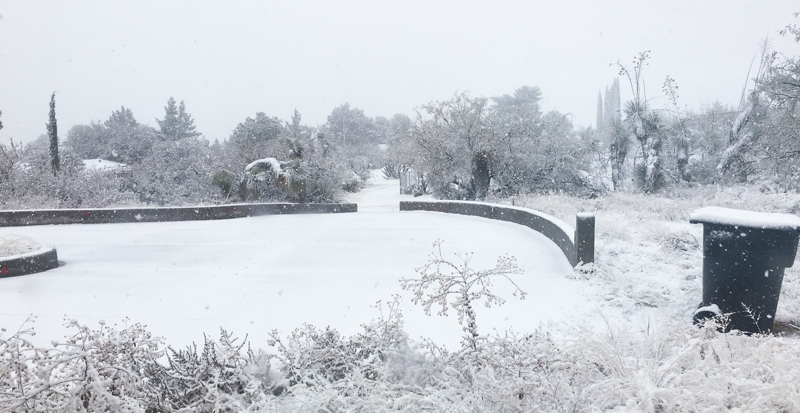
About noon on Monday I did a Twitter Periscope livestream video of a coyote in the snow:
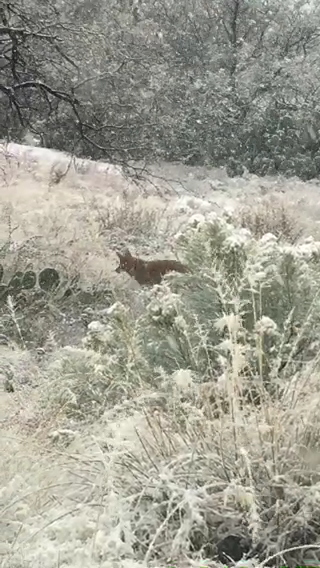
Click or tap on image for short video
Snow began ending about 1330 MST. Got 1":
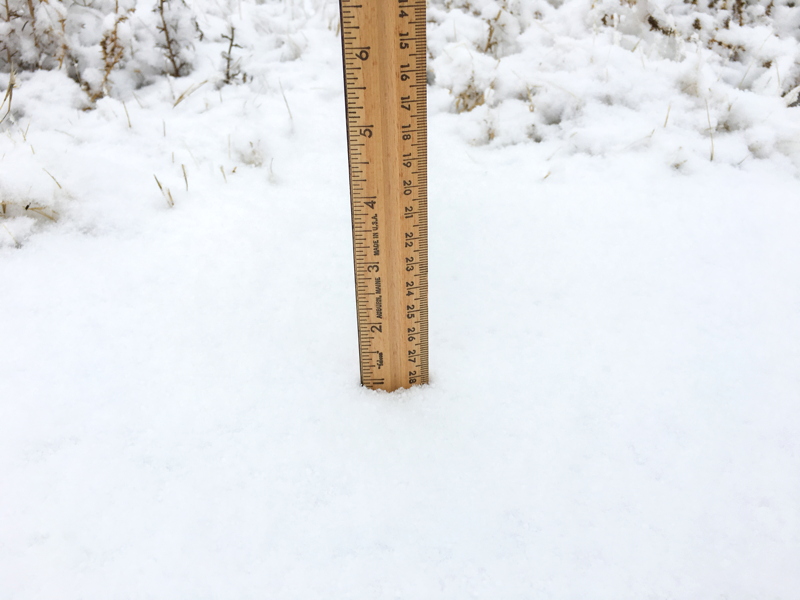
The thicker clouds went away after sunset but thin clouds remained over much of the sky Monday night. Tuesday, 15 December, dawned mostly clear and cold (28°F). Later that morning, with some snow still on the ground and the temperature up to 47°F, I went to the observatory to clear off some of the snow and ice from the dome:
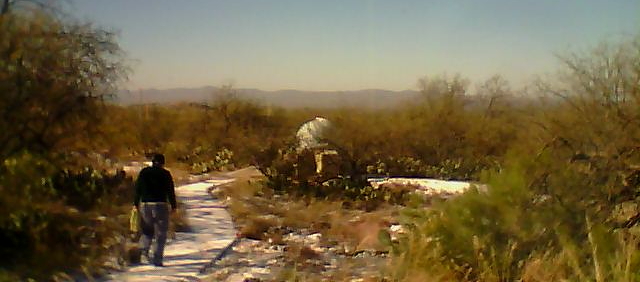
That night, with some snow and ice still on the ground and pathway to the observatory, I opened the observatory for a brief session.
|
Open: Tuesday, 15 December 2015, 2006 MST Temperature: 33°F |
Session: 896 Conditions: Clear |
After powering on the 8" LX200-ACF I discovered that the Wireless AutoStar II handcontroller buttons were not functioning. The display was working fine though. Apparently the handcontroller was frozen, literally, due to the low temperatures. I turned on the GC Wi-Fi Adapter and used the iOS app ScopeBoss on my iPhone 6s Plus to control the telescope. I always knew I'd appreciate having ScopeBoss as a backup for the handcontroller! The Wi-Fi unit and ScopeBoss worked perfectly in the low temperatures in the observatory this night.
2016 MST: viewed the crescent Moon, low in the western sky, 83X. Then set up for prime focus imaging of the Moon using the D7200 DSLR. This is a 1/400sec, ISO 2500, exposure:
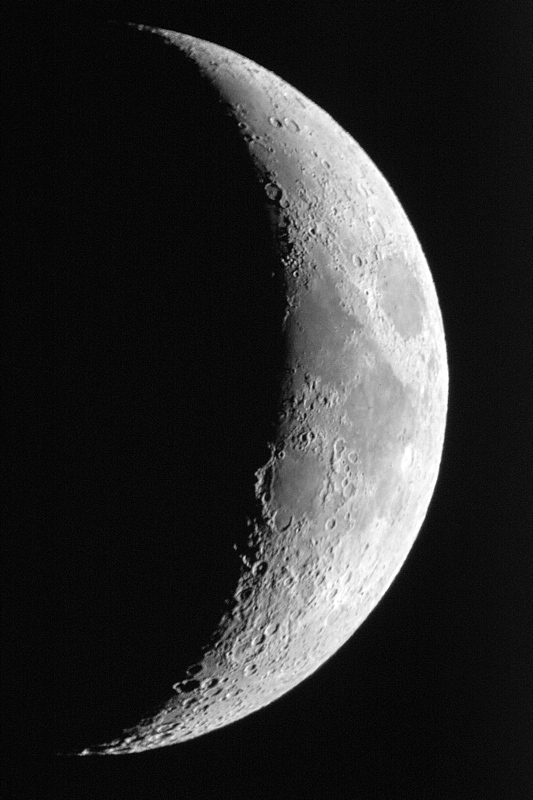
2025 MST: did some lunar observing at 222X using the Explore Scientific 9mm 100° eyepiece. It was great using Gslew (gesture slewing) with ScopeBoss and while wearing touchscreen gloves (purchased from Agloves.com several years ago). 2032 MST: last look at the Moon, 83X. Earthshine was nice.
Next, did a GOTO M42 (Great Orion Nebula) using ScopeBoss. Took these handheld iPhone 6s Plus photos of the Orion Nebula, afocal 83X, using NightCap Pro:
Light Boost, ISO 8000, 1/4sec
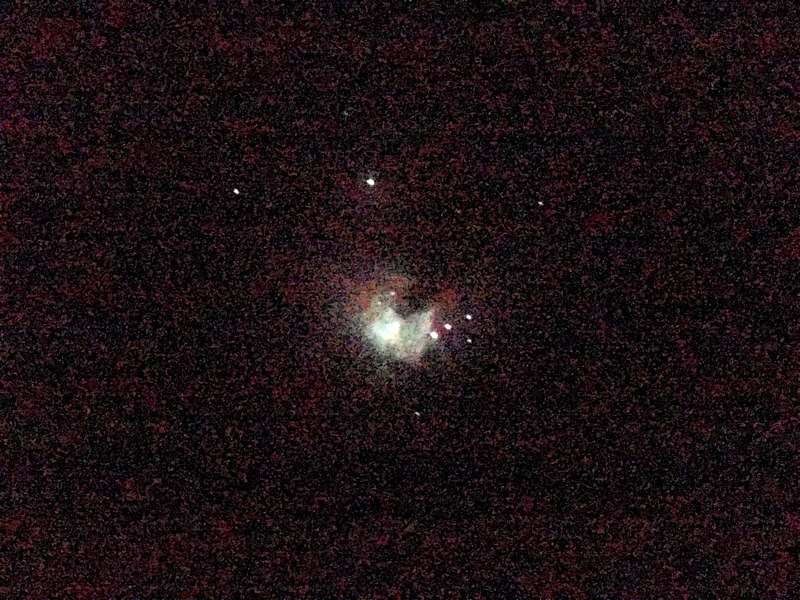
Light Boost, ISO 2000, 1/4sec
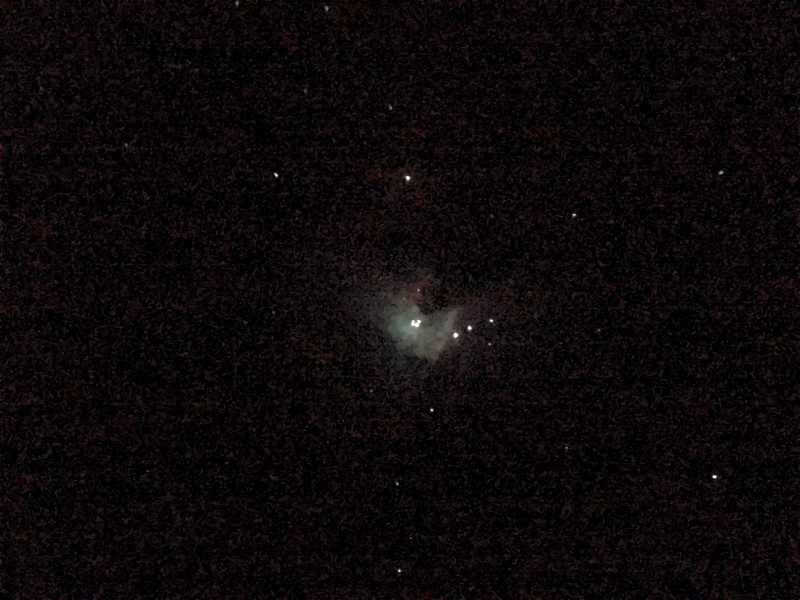
ISO 8000 brought out more nebulosity, whereas ISO 2000 captured the Trapezium stars. Both are pretty good considering they were short handheld images.
I then used SkySafari 4 Pro with the Wi-Fi adapter. This was done to confirm that its Wi-Fi connection was still functional (it was) prior to upgrading to the just released SkySafari 5 Pro. My review of SkySafari 5 Pro should be available soon.
I selected NGC2024 (Flame Nebula) in SkySafari 4 Pro and did a GOTO from the app. I used the app slew arrows to move the bright star Alnitak out of the field-of-view (FOV) of the 24mm UWA eyepiece (83X). Once the star was out of the FOV the Flame Nebula was faintly visible.
Returned to using ScopeBoss. Did a GOTO NGC2392 (Eskimo Nebula, planetary nebula), low in the eastern sky. Good view at 83X.
2052 MST: decided to close. I brought the frozen AutoStar handcontroller into the house after the session to let it warm up for the next session.
|
Close: Tuesday, 15 December 2015, 2112 MST Temperature: 31°F |
Session Length: 1h 06m Conditions: Clear |
Comments are welcome using Email. If you are on Twitter you can use the button below to tweet this report to your followers. Thanks.
Cassiopeia Observatory Home Page
Copyright ©2015 Michael L. Weasner / mweasner@me.com
URL = http://www.weasner.com/co/Reports/2015/12/16/index.html
